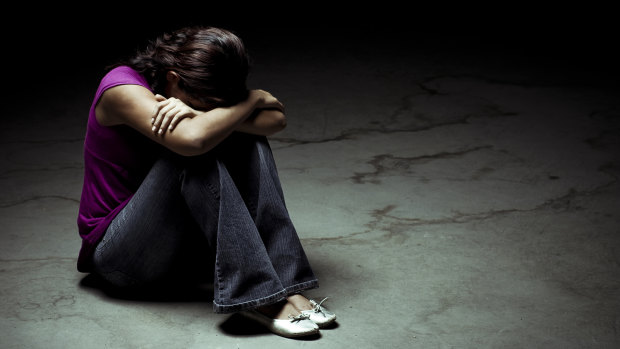This was published 4 years ago
Losing eyes on vulnerable children 'invisible' during lockdown
Vulnerable children face "dire consequences" because the coronavirus lockdown has taken them out of the sight of mandatory reporters, with community sector experts saying it also makes home visits from child protection workers risky.
Julie Hourigan Ruse, the chief executive of Fams, the peak body for not-for-profits working with vulnerable children, said at-risk kids are now "invisible" because most are not attending school or engaging in community activities.

The coronavirus lockdown has meant protection services are not able to visit many vulnerable children at home.
She encouraged ordinary people to step into the breach of teachers and sports coaches and report suspected child abuse.
"We are incredibly concerned we are losing those eyes on kids and those kids are going to become invisible to all the systems," she said. If ordinary community members "think something is not OK" with a child they know, they should raise their concerns "and not feel like it’s ‘dibby-dobby’ time", Ms Hourigan Ruse said.
Without proper oversight and intervention, "children will be subjected to physical abuse, to sexual abuse and severe neglect," she said.
According to the NSW government’s published statistics, 105,772 children were deemed at "risk of significant harm" in the 2018-2019 financial year, but only 29 per cent of those children (30,949) were seen by a case worker.
Child protection workers are still conducting home visits of vulnerable children "where it is safe and possible to do so", but there were anecdotal reports of families refusing visits, using COVID-19 as an excuse.
University of NSW Associate Professor Michael Salter, whose expertise is in child protection and online exploitation, said he expected to see a "significant reduction" in the numbers of children reported as at risk.
"It is a crisis for a system in crisis," he said.
"It is hard to see how the system might do things well when we have relied for so long on mandatory reporters outside the home."
A teacher’s aide at a Sydney school for children with emotional and learning difficulties said "the first ones we saw being kept at home were our most vulnerable kids".
"A lot of our population is out-of-home care kids - from hostels, foster homes or living with relatives," she said.
"They are the kids we are having trouble contacting and staying engaged with their learning.
Families, Communities and Disability Services Minister Gareth Ward said at-risk children would continue to be seen by case workers "in a safe way", with priority given to the children at highest risk.
Children in out-of-home care would be given extensions beyond the age of 18, and there was a "support plan" being developed for caregivers aged over 70.
"We will continue to be flexible and agile amid this ongoing situation, and remind the community to assist us in keeping kids safe by reporting abuse or neglect where they suspect it," Mr Ward said in a statement.
The Child Protection Helpline is 132 111 or online.